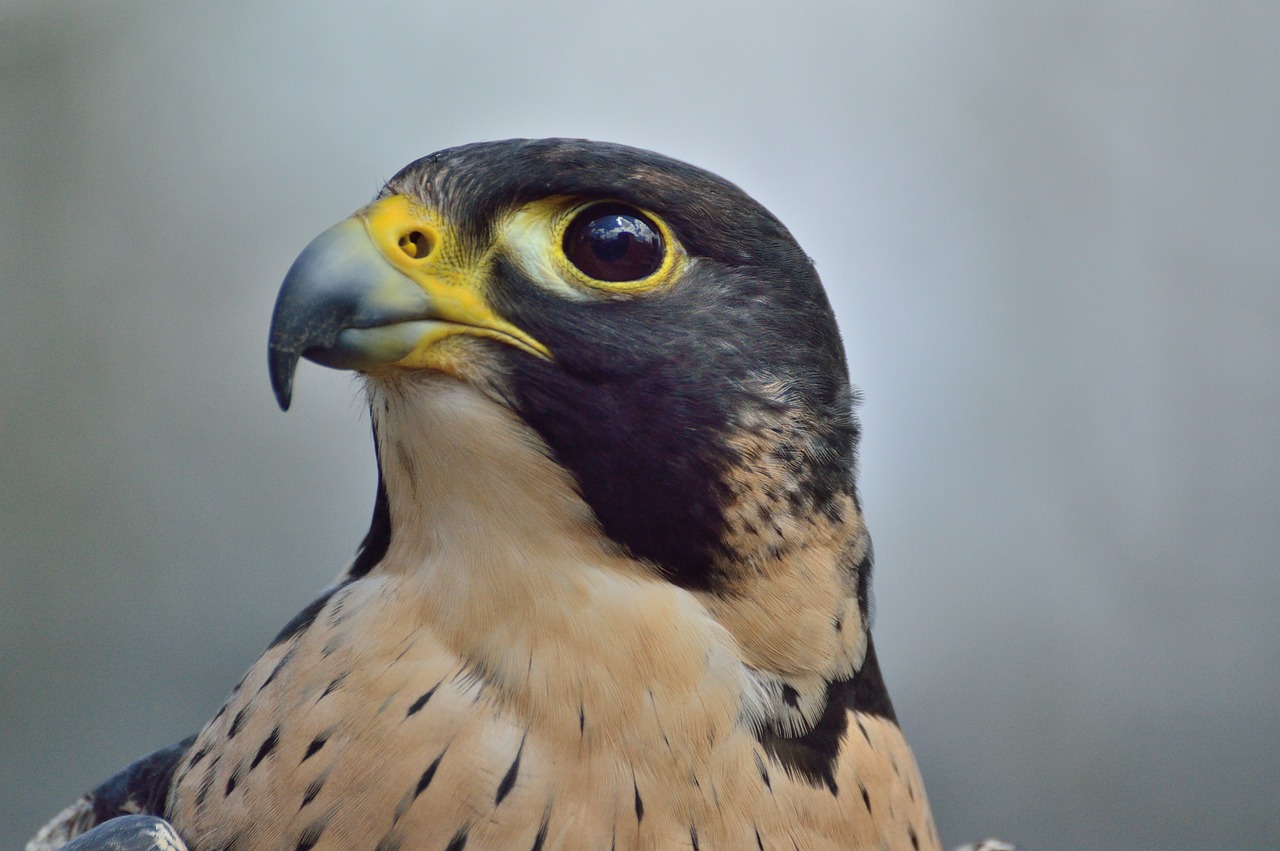Introduction
In the heart of bustling cities, where the skyline is dominated by towering skyscrapers, a remarkable tale of adaptation and resilience unfolds. Peregrine falcons (Falco peregrinus), the fastest birds in the world, have found an unlikely haven amidst the urban canyons. Their presence at great heights in urban skyscrapers is a testament to the incredible ability of wildlife to adapt and thrive in unexpected environments. Join us as we explore the fascinating lives of these urban falcons and the unique challenges and opportunities they face.
In the heart of bustling cities, where the skyline is dominated by towering skyscrapers, a remarkable tale of adaptation and resilience unfolds. Peregrine falcons (Falco peregrinus), the fastest birds in the world, have found an unlikely haven amidst the urban canyons. Their presence at great heights in urban skyscrapers is a testament to the incredible ability of wildlife to adapt and thrive in unexpected environments. Join us as we explore the fascinating lives of these urban falcons and the unique challenges and opportunities they face.
At first glance, it might seem counterintuitive for these majestic raptors to thrive in an urban setting. However, the very features that make skyscrapers intimidating to humans—the dizzying heights, sheer cliffs, and secluded ledges—have become ideal nesting sites for peregrine falcons. These birds of prey have embraced the vertical expanses of cityscapes as their new cliff faces, a stark departure from their traditional nesting locations on cliffs and rocky outcrops.
Peregrine falcons have mastered the art of city living with remarkable finesse. Their diet often includes pigeons and other urban birds, which are abundant in cities. High-speed aerial chases through the concrete canyons are common sights as they hunt their prey, showcasing their astonishing hunting prowess. Their incredible speed, with dives exceeding 200 miles per hour, allows them to excel even in the tight confines of the city.
Yet, it’s not all smooth sailing for these urban falcons. They face unique challenges, such as exposure to pollution, loud noises, and the risks associated with living in close proximity to humans. Conservation efforts have been crucial in monitoring their populations, as well as implementing measures to protect them from potential harm.
The presence of peregrine falcons in our urban environments serves as a testament to the coexistence of nature and human progress. Their survival in the city reminds us that, even in the most unlikely places, the wonders of the natural world can persist and adapt. Moreover, their story underscores the importance of conservation and responsible urban planning to ensure that these remarkable birds continue to thrive amidst our ever-expanding cities. As we peer into the lives of these urban falcons, we gain a deeper appreciation for the intricate dance between nature and urbanization, where unexpected partnerships can emerge, and the wild can thrive in the heart of the concrete jungle.
Additionally, you can find further information on this topic by visiting this page: Peregrine falcons are the top birds in town | Natural History Museum
Before delving into their urban exploits, it’s worth noting the remarkable characteristics that define peregrine falcons. Known for their breathtaking aerial prowess, these birds are famous for their incredible speed and precision in hunting. They can reach speeds of up to 240 miles per hour (386 kilometers per hour) when stooping (diving) to catch prey, making them the fastest animals on the planet. Their keen eyesight and formidable talons allow them to target and capture other birds mid-flight with unparalleled accuracy.
Before delving into their urban exploits, it’s worth pausing to marvel at the exceptional attributes that define peregrine falcons. These remarkable birds of prey are truly nature’s aerial acrobats, known for their breathtaking displays of speed, precision, and hunting prowess.
Speed: Peregrine falcons are renowned for their incredible speed. When they engage in a hunting technique known as “stooping” or diving, they become the fastest animals on the planet. In these breathtaking descents, they can reach astonishing speeds of up to 240 miles per hour (386 kilometers per hour). This unparalleled velocity allows them to close the gap rapidly between themselves and their prey, making their attacks almost unstoppable.
Precision: The precision of peregrine falcons in hunting is nothing short of awe-inspiring. Their keen eyesight, which is estimated to be eight times more powerful than that of humans, allows them to spot prey from great distances. They lock onto their target with unwavering focus, tracking their quarry with exceptional accuracy as it flies through the air. Then, with lightning speed, they strike with their powerful talons.
Hunting Technique: Peregrine falcons are renowned for their distinctive hunting technique, known as the “stoop.” During a stoop, they ascend to great heights, then tuck in their wings and plummet earthward like a guided missile. Their streamlined bodies and specialized wing structure enable them to maintain control even at tremendous speeds. This technique is a testament to their mastery of aerial combat.
Specialized Diet: Their diet primarily consists of other birds, and their hunting strategy is adapted to this preference. They often target birds in mid-flight, using their incredible speed and agility to close in on unsuspecting prey. Their talons, which are equipped with sharp, hooked claws, ensure a firm grip on their quarry during the frenetic chase.
Conservation Success: Peregrine falcons also have a remarkable conservation story. At one point, these magnificent birds faced a grave threat due to the widespread use of pesticides like DDT, which caused eggshell thinning and population decline. However, through concerted conservation efforts, including captive breeding and the banning of harmful pesticides, their populations have rebounded, demonstrating the resilience of these raptors in the face of environmental challenges.
In summary, peregrine falcons are a testament to the incredible capabilities of nature’s predators. Their awe-inspiring speed, precision, and hunting skills have captivated the imaginations of humans for centuries. As we explore their urban adaptations and the challenges they face in cities, it’s important to remember the awe-inspiring natural abilities that underpin their remarkable survival stories.
If you’d like to dive deeper into this subject, there’s more to discover on this page: Endangered and Threatened Animals of Texas

In the mid-20th century, peregrine falcon populations faced a dire threat due to the widespread use of the pesticide DDT, which caused eggshell thinning and reproductive failure. As a result, peregrine falcons were nearly wiped out in many regions, including North America. However, successful conservation efforts and a ban on DDT led to a remarkable recovery.
In an unexpected twist, these birds of prey began to colonize urban environments, particularly skyscrapers. Peregrine falcons have a penchant for high places, and the ledges of tall buildings mimic their natural cliffside nesting sites. This urban exodus allowed them to escape ground-based predators and find plentiful food sources.
To delve further into this matter, we encourage you to check out the additional resources provided here: Peregrines—and a Photographer—Bunk Out at Chicago Man’s …

Life in the city presents both opportunities and challenges for urban peregrine falcons:
Life in the city presents both remarkable opportunities and formidable challenges for urban peregrine falcons, these majestic raptors that have chosen to make skyscrapers and urban canyons their home.
Opportunities:
Prey Abundance: Cities, with their bustling pigeon populations, offer a steady and accessible source of prey for peregrine falcons. These agile hunters have adapted to urban life by specializing in hunting pigeons and other birds that thrive in the city environment. This provides a reliable food source, helping sustain falcon populations.
Nesting Sites: Tall buildings and urban structures mimic the natural cliffs that peregrine falcons typically use for nesting in the wild. Peregrines have capitalized on this similarity by utilizing ledges, nooks, and crannies in skyscrapers as nesting sites. These high-rise nests offer protection from ground predators and can provide breathtaking views of the city below.
Protection from Natural Predators: Urban environments often shield peregrine falcons from their natural predators. In cities, they are less vulnerable to threats like larger raptors and terrestrial animals that may pose dangers to their nests or young chicks.
Challenges:
Human Disturbance: The constant human activity in urban areas can disturb nesting peregrine falcons. Noise, vibrations, and even well-intentioned but intrusive observers can cause stress and disrupt their breeding and chick-rearing efforts.
Contaminants: Urban areas may expose peregrine falcons to environmental contaminants, such as pollutants and toxins, which can accumulate in their prey and potentially harm the birds themselves. Efforts are made to monitor these contaminants and protect the health of urban peregrine populations.
Collisions: The maze of buildings and reflective glass windows in urban areas poses a significant threat to peregrine falcons. These birds may collide with buildings or windows, leading to injuries or fatalities. Conservationists and architects work together to design buildings that are more bird-friendly to reduce these collisions.
Loss of Green Spaces: The increasing urbanization of cities can result in the loss of green spaces and natural habitat. This loss can limit the availability of suitable hunting grounds and potentially reduce prey populations, impacting peregrine falcon survival.
In conclusion, urban peregrine falcons exemplify the adaptability and resilience of wildlife in the face of urbanization. They have found innovative ways to exploit the opportunities that cities provide, such as abundant prey and nesting sites. Yet, they also contend with challenges related to human disturbances, environmental contaminants, and the changing urban landscape. The coexistence of peregrine falcons and urban life highlights the importance of conservation efforts and urban planning that consider the needs of both wildlife and human inhabitants to maintain the delicate balance of urban ecosystems.
Looking for more insights? You’ll find them right here in our extended coverage: Peregrine falcons are the top birds in town | Natural History Museum

In conclusion, the presence of peregrine falcons in urban skyscrapers is a testament to nature’s adaptability and the success of conservation efforts. These aerial predators have not only recovered from near-extinction but have also embraced the vertical world of cities as their own. They serve as a captivating example of the resilience and resourcefulness of wildlife, reminding us that even amidst the steel and glass of urban landscapes, the natural world can find a way to thrive. Peregrine falcons in the city are a symbol of hope and inspiration, showing us the incredible possibilities of coexistence between humans and the wildlife that shares our urban spaces.
Looking for more insights? You’ll find them right here in our extended coverage: Peregrine falcons are the top birds in town | Natural History Museum

More links
Looking for more insights? You’ll find them right here in our extended coverage: Thirty years later: Peregrine falcons recovered, thriving in Great …
